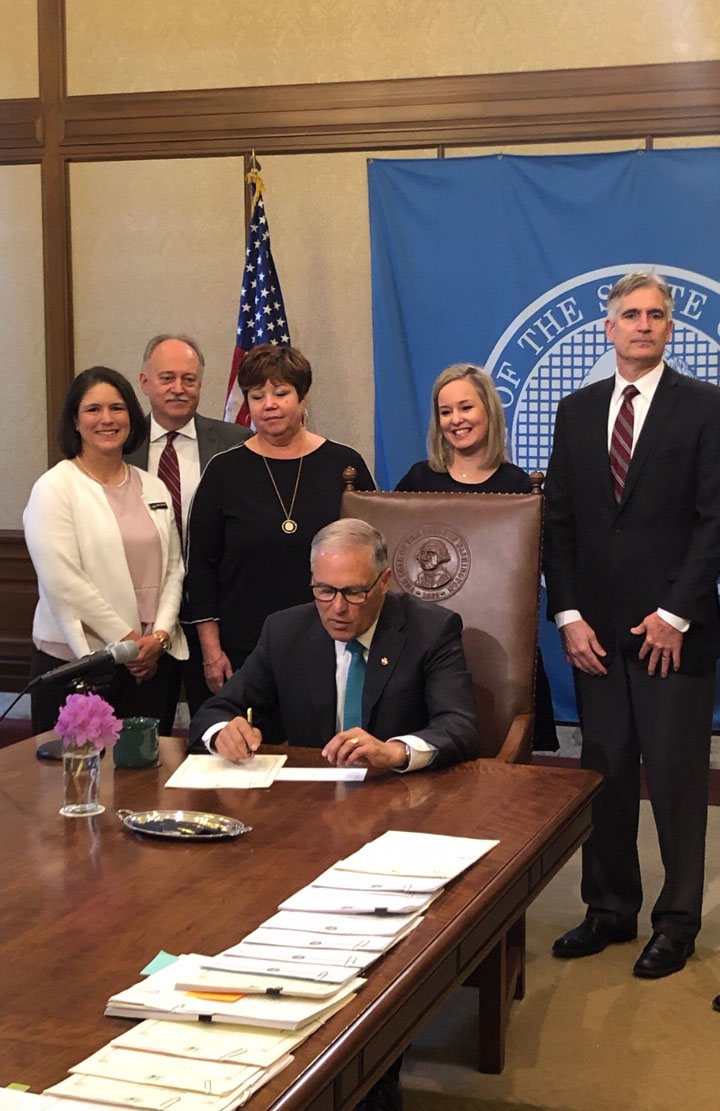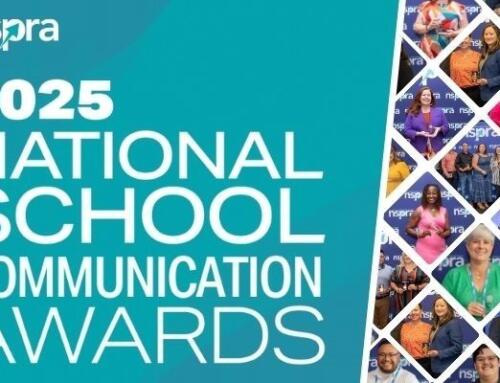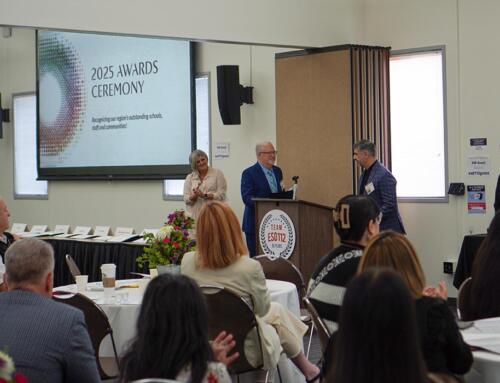
Pictured with Governor Inslee from left right: Jessica Vavrus (WSSDA), Tim Merlino (ESD 112), Marie Sullivan Legislative Advocate), Melissa Gomboski (Legislative Advocate), and Dave Maston (Legislative Advocate, OSPI)
Thanks, in part, to the advocacy of ESD 112 Superintendent Tim Merlino and his colleagues at the other eight Washington ESDs this spring, the ESDs have four years to come up with a plan and additional funding to implement a new school employees benefits (SEB) program. Because ESDs would not have received the funding required to implement SEB (like their school district counterparts) the Washington state Legislature passed House Bill 2096 to grant a four-year exemption.
The new program requires all Washington state school districts to participate in mandatory, state-sponsored benefits, beginning Jan. 1, 2020. With SEB, school districts will no longer be allowed to offer their own health benefit plans and employees will not have a choice in selecting plans and plan offerings.
SEB was created with the intent of eliminating differences in school employee benefit coverage, making them more affordable for employees, consolidating bargaining benefits, and promoting transparency and accountability. Unfortunately, mandatory participation for all employees in one plan creates unfunded additional costs for ESDs without providing state dollars to cover these costs.
The problem with SEB implementation for ESDs is that they are funded much differently than school districts. While school districts receive state funding to cover SEB costs for the majority of their employees, ESDs would have received funding for just 10 percent of employees. This would have led to a $1.675 million shortfall for ESD 112 alone.
“A temporary exemption will give us some time to adjust our offerings and explore additional funding options,” Merlino said. “Research will help us to understand if SEB can be sustainably implemented by ESDs.”




 ESD 112 equalizes educational opportunities for learning communities through innovative partnerships, responsive leadership, and exceptional programs.
ESD 112 equalizes educational opportunities for learning communities through innovative partnerships, responsive leadership, and exceptional programs.